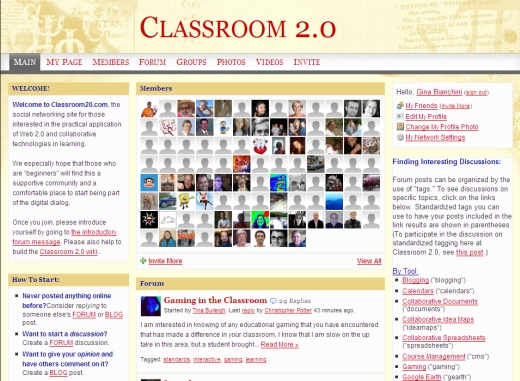Second language teachers could use blogs in their classroom teaching with an enriching, relevant, and challenging way. Computer assisted learning could give a chance to get a lot of language information largely: 1) technical access of the target language through usage of four language domains, 2) background knowledge of target language, and 3) communication with target language users.
1. Computer assisted learning (Technically)
Standard: Second language learners will meet the standards of the Four language domains for developing second language.
Through computer based interaction, second language learners can improve their language skills in these four language domains. It could fill the gap between in-classroom learning and the real language usage.
Each of the five language proficiency standards is divided into the language domains of listening, speaking, reading, and writing. While interaction naturally occurs between and among language domains, in this document, they are maintained as separate constructs as one way of thinking about curriculum, instruction, and assessment.
Listening
Listening is an active skill. By highlighting an assortment of listening tasks across standards, the need to involve students in active listening and purposeful listening skills development becomes clear.
Speaking
English language learners engage in oral communication in a variety of situations for a variety of purposes and in a wide spectrum of settings. As part of oral communication, students are constantly using language in meaningful interaction with others.
Reading
English language learners process, interpret, and evaluate written language, symbols, and text with understanding and fluency. Learning to read in a second language may be enhanced or hindered by students’ level of literacy in their native language. Students who have a strong foundation in reading in their first language bring with them skills that can be readily transferred in the process of learning to read in English.
Writing
English language learners use written communication for a variety of purposes and audiences. Writing can be used to express meaning through drawing, symbols, or text. English language learners may come with writing styles influenced by their home cultures.
2. Background knowledge of target language
Second language teacher can provide various contents related with the target language: culture, society, custom, tradition, history, and etc. This information could consist of the background knowledge of second language learning. Based on the real input from the target culture or target society, the second language learns can enhance the understanding of the target culture and motivate the second language learning. Also, the teacher can function as a facilitator rather than a purveyor of knowledge throughout using this blog source.
3. Communication with target language users (or Language websites)
This facility makes it possible that second language learners around the world can contact with native target language learners. Even these blog tools can offer many opportunities for second language learners with the integration of text (through e-mail, or comments), images, or video. Through this electronic communication, language learners can connect with the target language uses anytime, anywhere.
Even second language learners can access to thousands of foreign-language websites to learn a target language through a variety of ways: it ensures the approachableness of the second language learners to the target language.






